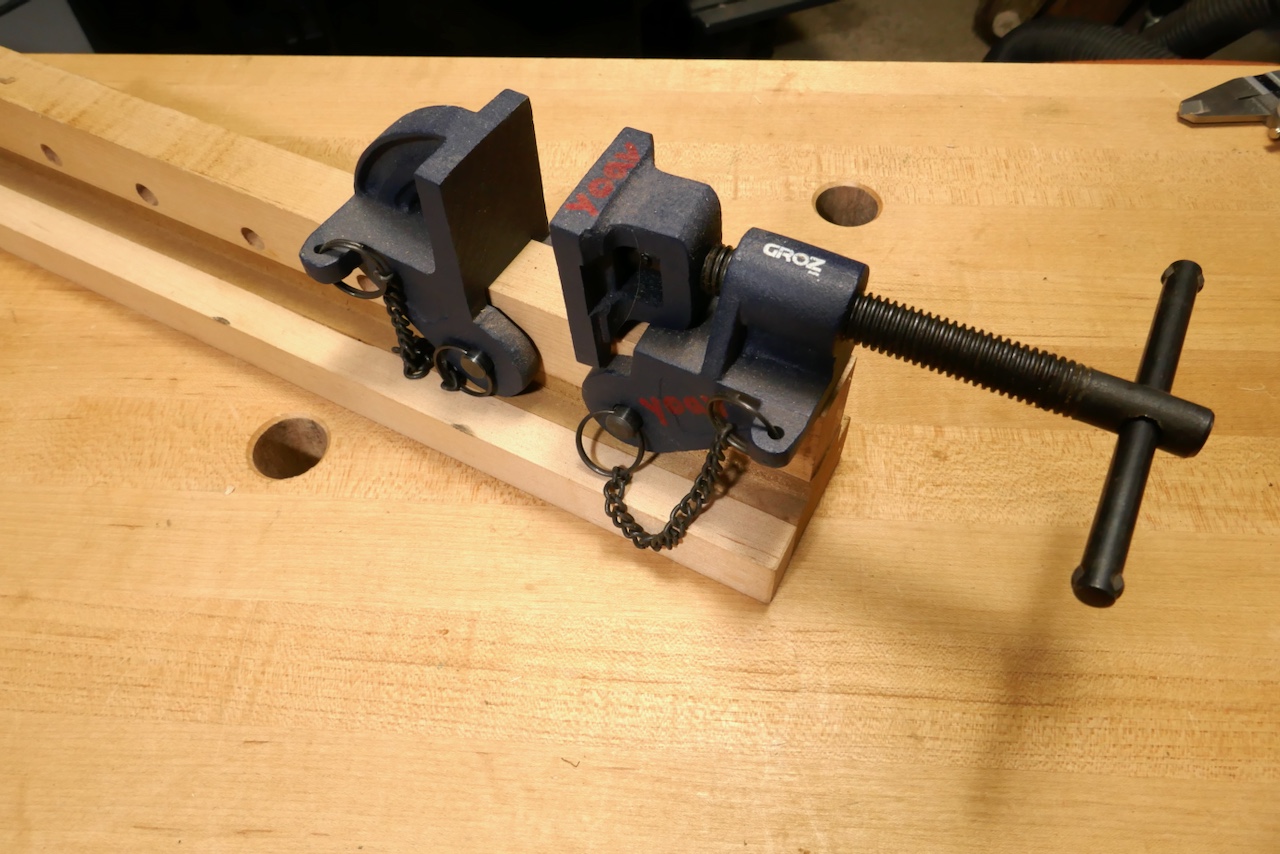We may receive a commission when you use our affiliate links. However, this does not impact our recommendations.
This blog entry will make our UK base readership happy and will bring a smile to the British expats who live in the USA. This week’s story is about sash clamps, a type of clamp that I haven’t seen in American woodworking catalogs or being mentioned by North American content creators.
Most American woodworkers are familiar with steel or aluminum sash clamps made of three parts: a head, a tail, and a beam whose crosscut resembles a rectangle, the letter T or I.
Those heavy-duty sash clams are very common in the industrial setting where big shops are assembling massive panels or need to clamp complicated frameworks. For most of us, a pipe clamp serves this purpose. Pipe clamps have been popularized in North America and dominate the panel clamping and flat frameworks market. We even use pipe clamps to hold together elements of carcasses when we glue them together to form our furniture. Don’t get me wrong, pipe clamps are pretty great. They are cheap, versatile, and common; you can find them almost everywhere, and they’re made by many makers. However, I wanted to introduce to you this predominantly British style of clamp and propose that if you give it a try, it will be one of the most excellent clamps you’ll ever use.

The Indian Made Groz sash clamp.
What sets them apart from pipe clamps is their beam, which has to be made by the user.
The clamp trio comprises two cast iron heads that saddle over a hardwood track beam. After obtaining the heads, the user must make the beams by milling the wood and drilling the mounting holes.
To use the clamp, the clamping head is mounted over the end of the beam while the movable head is slid to the needed position along the length. Then, the heads are secured onto the beam via retaining metal pins or bolts.

As woodworkers, it’s straightforward for us to make beams of different lengths and heights. The higher the beam, the more robust the clamp.
Sash clamps have many advantages, from being able to form beams of different lengths, the fact that they are very stable and don’t roll over, or the necessity to align the two heads – as often happens with pipe clamps.

Sash clamps that ride over an inverted T beam are even stronger and more stable than the bar that most people build. They can also be held in a vise and hold a workpiece for carving or planing.
The only shortcomings of sash clamps are price and beam deformation. Over time, the holes will get compressed, and the heads will begin to pivot under clamping forces.
Here are some buying options that I found online. Notice the only North American vendors are via Amazon.

 Stanley created their own version of the sash clamp. Instead of a positive pin-and-hole system, the Stanley clamp relies on the beam foot clamp to keep the heads from moving.
Stanley created their own version of the sash clamp. Instead of a positive pin-and-hole system, the Stanley clamp relies on the beam foot clamp to keep the heads from moving.
Next time, I will show how we can use these clamps in various woodworking applications.
Here are some supplies and tools we find essential in our everyday work around the shop. We may receive a commission from sales referred by our links; however, we have carefully selected these products for their usefulness and quality.








